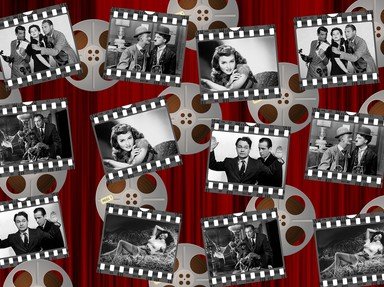Quiz Answer Key and Fun Facts
1. "Pandora's Box"(1929) tells the story of Lulu, a prostitute, who is the downfall of nearly all she meets. Escaping from a manslaughter charge, she goes into hiding, is nearly sold into slavery, escapes again into England where she is forced to return to prostitution. What happens to Lulu?
2. D.W.Griffith ranks as perhaps the outstanding director of his time. "Birth of a Nation" (1915) is a film achievement with not only a strong narrative but a host of inventive camera techniques. What organization used this film as a recruitment device?
3. "Nanook of the North" (1922) is often cited as the first full length documentary. It follows the life of an Inuit in northern Canada through perils and survival. Its Director and Producer Robert Flaherty came under criticism. Why?
4. "The Sheik" (1921) is a romantic film that launched the career of what silent screen star?
5. Although only 12 minutes long, "The Great Train Robbery" (1903) is a benchmark of film making. It introduces new film techniques such as cross-cutting and double exposure. What actor in this film went on to become one of the most popular western star of that period?
6. "Wings" (1927) tells the story of pilots in World War One. Its budget was over two million dollars, costly for a film of that time. But given the hype of Charles Lindbergh Atlantic flight, the public was ready for a film of flying heroes. How was this film honored as no other silent film was?
7. "The Kid" (1923) touched the heartstrings of movie-goers of the time. Charlie Chaplin, in his tramp character, takes in a foundling (The Kid) and suffers the trials of parenthood and the difficulties that ensue. Chaplin introduced to the world a child star who in the height of his career earned three million dollars. What was his name?
8. "Intolerance" (1916) is D. W. Griffith's follow-up film after "Birth of a Nation". The film has four story lines from four different eras of mankind. Which of these was NOT a story line?
9. "Sadie Thompson" (1928) was one of Gloria Swanson's most successful films. Based on a short story by Somerset Maugham, a prostitute, trying to turn her life around, travels to the South Seas where a puritan preacher, played by Lionel Barrymore, undertakes to rehabilitate her. The film was so popular that it has been remade three times. Who was the female star of the 1953 musical remake?
10. "The Crowd" (1928) concerns the impersonalization of modern society. A couple struggles with life but because they are only one of a 'crowd' they are never able to emerge from the trap set by society. This film lost out to "Sunrise" (1928) for Best Artistic Production and was nominated for Best Director for ________?
Source: Author
Rehaberpro
This quiz was reviewed by FunTrivia editor
Nannanut before going online.
Any errors found in FunTrivia content are routinely corrected through our feedback system.

